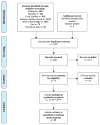Toward systems neuroscience of ADHD: a meta-analysis of 55 fMRI studies
- PMID: 22983386
- PMCID: PMC3879048
- DOI: 10.1176/appi.ajp.2012.11101521
Toward systems neuroscience of ADHD: a meta-analysis of 55 fMRI studies
Abstract
Objective: The authors performed a comprehensive meta-analysis of task-based functional MRI studies of attention deficit hyperactivity disorder (ADHD).
Method: The authors searched PubMed, Ovid, EMBASE, Web of Science, ERIC, CINAHAL, and NeuroSynth for studies published through June 30, 2011. Significant differences in brain region activation between individuals with ADHD and comparison subjects were detected using activation likelihood estimation meta-analysis. Dysfunctional regions in ADHD were related to seven reference neuronal systems. The authors performed a set of meta-analyses focused on age groups (children and adults), clinical characteristics (history of stimulant treatment and presence of psychiatric comorbidities), and specific neuropsychological tasks (inhibition, working memory, and vigilance/attention).
Results: Fifty-five studies were included (39 for children and 16 for adults). In children, hypoactivation in ADHD relative to comparison subjects was observed mostly in systems involved in executive function (frontoparietal network) and attention (ventral attentional network). Significant hyperactivation in ADHD relative to comparison subjects was observed predominantly in the default, ventral attention, and somatomotor networks. In adults, ADHD-related hypoactivation was predominant in the frontoparietal system, while ADHD-related hyperactivation was present in the visual, dorsal attention, and default networks. Significant ADHD-related dysfunction largely reflected task features and was detected even in the absence of comorbid mental disorders or a history of stimulant treatment.
Conclusions: A growing literature provides evidence of ADHD-related dysfunction in multiple neuronal systems involved in higher-level cognitive functions but also in sensorimotor processes, including the visual system, and in the default network. This meta-analytic evidence extends early models of ADHD pathophysiology that were focused on prefrontal-striatal circuits.
Conflict of interest statement
Dr. Cortese received financial support to attend medical meetings from Eli Lilly and Company (2007–9) and Shire Pharmaceuticals (2009–10), and was a co-investigator in studies sponsored by GlaxoSmithKline (2006), Eli Lilly and Company (2007–8), and Genopharm (2008). He served as a consultant for Shire Pharmaceuticals (2009–10). Dr. Cortese has no current relationships with pharmaceutical companies. The other co-authors report no competing interests.
Figures



Similar articles
-
Neural correlates of executive function and attention in children with ADHD: An ALE meta-analysis of task-based functional connectivity studies.Psychiatry Res. 2025 Mar;345:116338. doi: 10.1016/j.psychres.2024.116338. Epub 2025 Jan 29. Psychiatry Res. 2025. PMID: 39947841 Review.
-
Meta-analysis of functional magnetic resonance imaging studies of inhibition and attention in attention-deficit/hyperactivity disorder: exploring task-specific, stimulant medication, and age effects.JAMA Psychiatry. 2013 Feb;70(2):185-98. doi: 10.1001/jamapsychiatry.2013.277. JAMA Psychiatry. 2013. PMID: 23247506
-
Disrupted network architecture of the resting brain in attention-deficit/hyperactivity disorder.Hum Brain Mapp. 2014 Sep;35(9):4693-705. doi: 10.1002/hbm.22504. Epub 2014 Mar 25. Hum Brain Mapp. 2014. PMID: 24668728 Free PMC article.
-
Attention network hypoconnectivity with default and affective network hyperconnectivity in adults diagnosed with attention-deficit/hyperactivity disorder in childhood.JAMA Psychiatry. 2013 Dec;70(12):1329-37. doi: 10.1001/jamapsychiatry.2013.2174. JAMA Psychiatry. 2013. PMID: 24132732
-
[Structural and functional neuroanatomy of attention-deficit hyperactivity disorder (ADHD)].Encephale. 2009 Apr;35(2):107-14. doi: 10.1016/j.encep.2008.01.005. Epub 2008 Jul 7. Encephale. 2009. PMID: 19393378 Review. French.
Cited by
-
Brain connectivity and socioeconomic status at birth and externalizing symptoms at age 2 years.Dev Cogn Neurosci. 2020 Oct;45:100811. doi: 10.1016/j.dcn.2020.100811. Epub 2020 Jun 30. Dev Cogn Neurosci. 2020. PMID: 32823180 Free PMC article.
-
Variability in Cognitive Task Performance in Early Adolescence Is Associated With Stronger Between-Network Anticorrelation and Future Attention Problems.Biol Psychiatry Glob Open Sci. 2022 Nov 26;3(4):948-957. doi: 10.1016/j.bpsgos.2022.11.003. eCollection 2023 Oct. Biol Psychiatry Glob Open Sci. 2022. PMID: 37881561 Free PMC article.
-
Behavioral and Cognitive Impacts of Mindfulness-Based Interventions on Adults with Attention-Deficit Hyperactivity Disorder: A Systematic Review.Behav Neurol. 2019 Apr 4;2019:5682050. doi: 10.1155/2019/5682050. eCollection 2019. Behav Neurol. 2019. PMID: 31093302 Free PMC article.
-
Are attention and cognitive control altered by fMRI scanner environment? Evidence from Go/No-go tasks in ADHD.Brain Imaging Behav. 2022 Jun;16(3):1003-1013. doi: 10.1007/s11682-021-00557-x. Epub 2021 Oct 27. Brain Imaging Behav. 2022. PMID: 34705186
-
Partitioning heritability analyses unveil the genetic architecture of human brain multidimensional functional connectivity patterns.Hum Brain Mapp. 2020 Aug 15;41(12):3305-3317. doi: 10.1002/hbm.25018. Epub 2020 Apr 24. Hum Brain Mapp. 2020. PMID: 32329556 Free PMC article.
References
-
- Polanczyk G, de Lima MS, Horta BL, Biederman J, Rohde LA. The worldwide prevalence of ADHD: a systematic review and metaregression analysis. Am J Psychiatry. 2007;164:942–948. - PubMed
-
- Mannuzza S, Klein RG, Moulton JL., III Persistence of Attention-Deficit/Hyperactivity Disorder into adulthood: what have we learned from the prospective follow-up studies? J Atten Disord. 2003;7:93–100. - PubMed
-
- Wolraich M. Attention deficit hyperactivity disorder: The most studied and yet most controversial diagnosis. Ment Retard Devel Disabil Res Rev. 1999;5:163–168.
-
- Dickstein SG, Bannon K, Castellanos FX, Milham MP. The neural correlates of attention deficit hyperactivity disorder: an ALE meta-analysis. J Child Psychol Psychiatry. 2006;47:1051–1062. - PubMed
-
- Barkley RA. Behavioral inhibition, sustained attention, and executive functions: constructing a unifying theory of ADHD. Psychol Bull. 1997;121:65–94. - PubMed
Publication types
MeSH terms
Grants and funding
LinkOut - more resources
Full Text Sources
Medical

